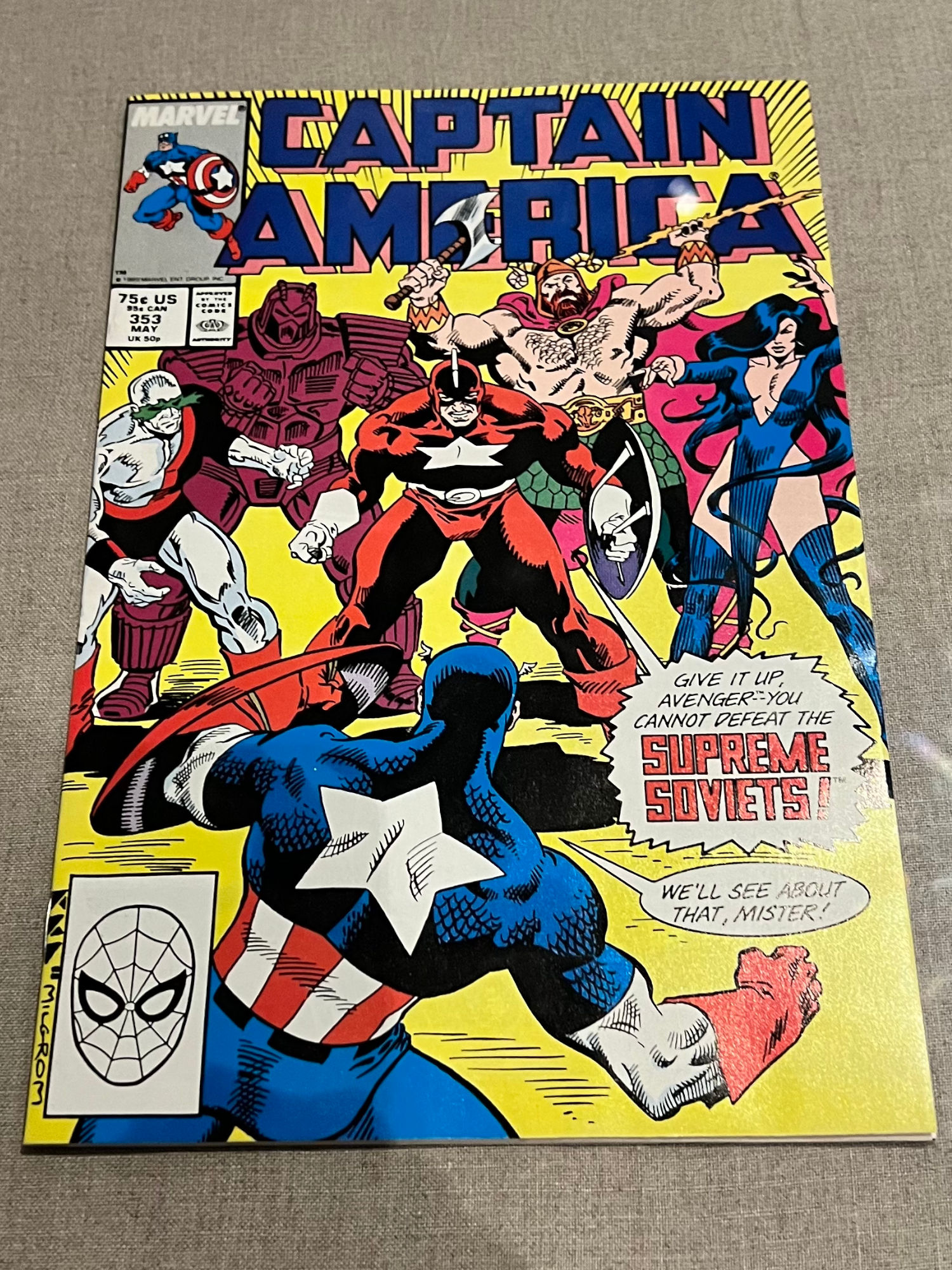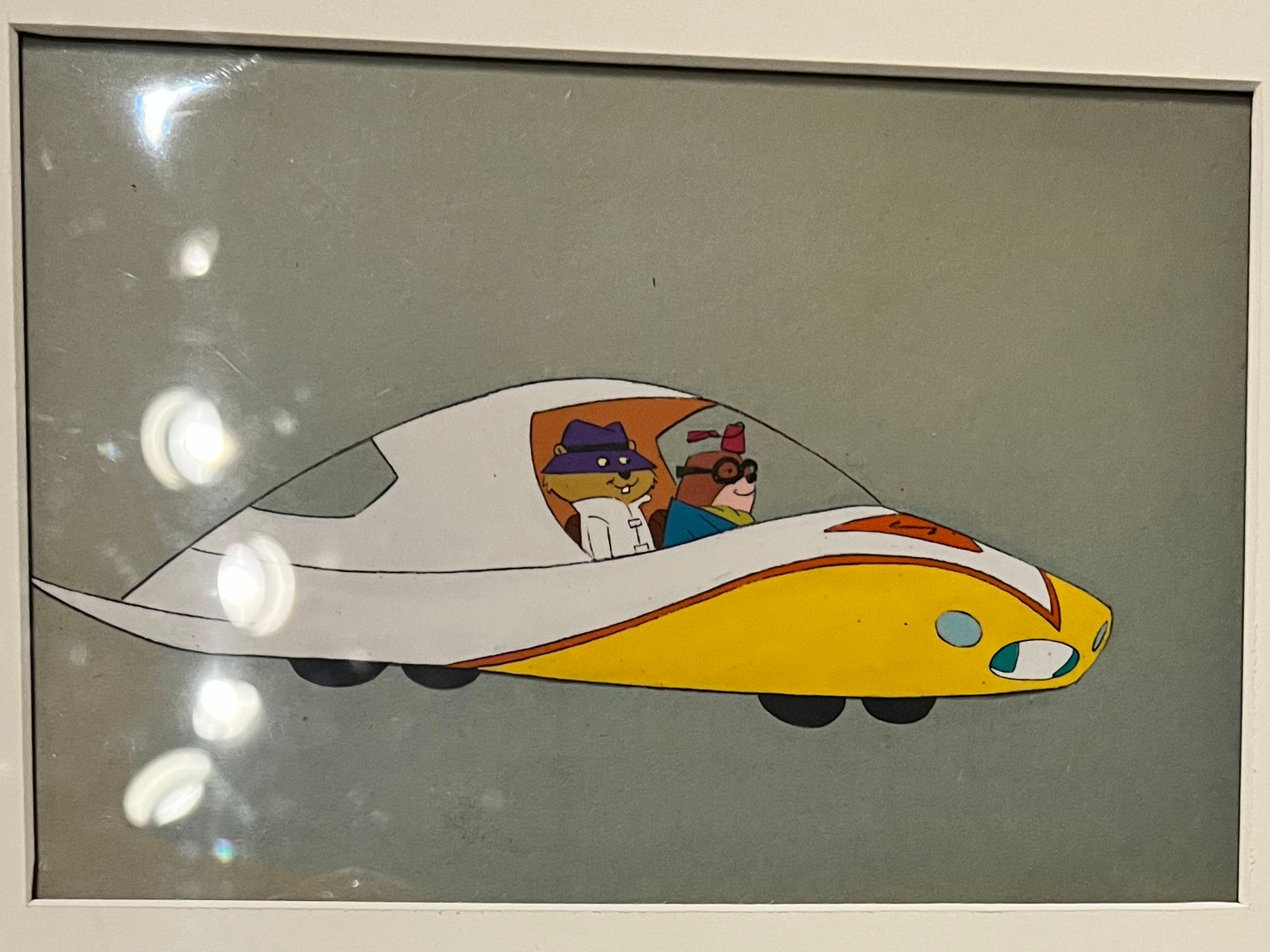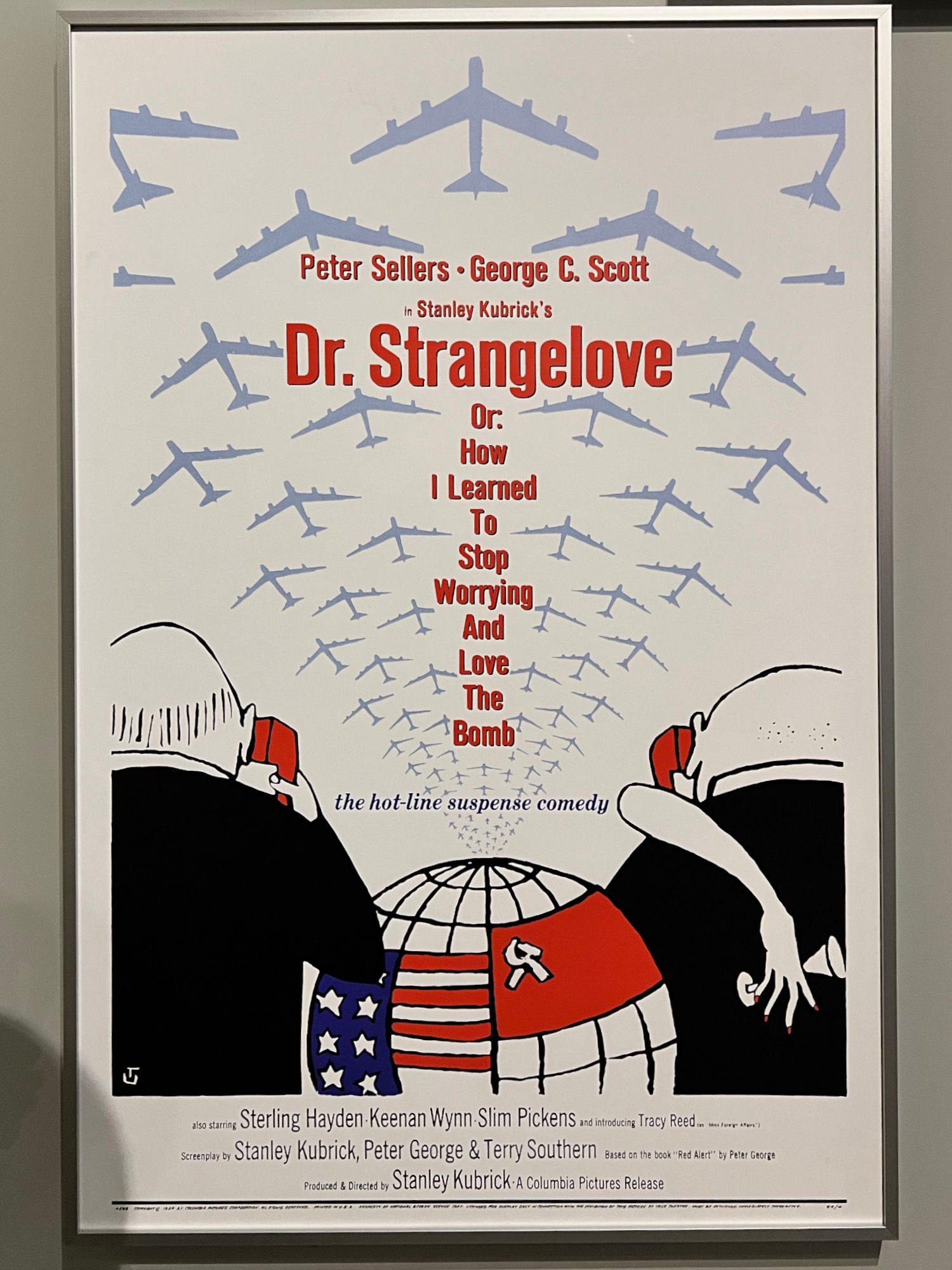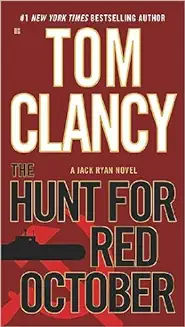The possibility that the Cold War could turn into nuclear annihilation permeated American popular culture. Movies, television, books, and even toys reflected the degree to which the Cold War was never far from people's minds.
Whether portraying heroes or villains, heightening anxiety or reducing fear, popular culture in the United States colored how people saw the Cold War and how they felt about it.
At a time when American values were under threat, spies, secret agents, and intelligence operatives helped assure viewers that freedom would prevail.
Among the most popular were
- James Bond in From Russia With Love and The Spy Who Loved Me
- Napoleon Solo of The Man From U.N.C.L.E.
- Mission: Impossible's Jim Phelps


Prop: From Russia With Love Knife
- The silver attache case with hidden knife was a production prop in the James Bond movie From Russia with Love.

Gun from A View to a Kill
- A non-functional prop version of Bond's signature weapon, a Walther PPK pistol, was used during the production of a San Francisco sequence in the 1985 James Bond movie A View to a Kill.

Characters including Superman, Batman, Captain America, the Avengers, and the X-Men appeared in comic books, as action figures, on trading cards, and in theaters using their superpowers to defeat a cruel and relentless enemy.





Animation Cel
- This 1965 color animation cel depicts the show's two spy heroes, Secret Squirrel and his trusted sidekick, Morocco Mole, inside their spy mobile.
Whether it was a bumbling Maxwell Smart nevertheless prevailing over an evil enemy; the unlikely pair of Rocky, a squirrel, and Bullwinkle, a moose, defeating the spies Boris and Natasha; or Mad magazine's comic, Spy vs. Spy, poking fun at both sides of the Cold War conflict, Cold War satire often served to both amuse and defang America's adversaries.
But satire also grew dark, notably in the movies Dr. Strangelove or: How I Learned to Stop Worrying and Love the Bomb and Fail Safe. These films tapped into the fear that ineptitude could inadvertently trigger a nuclear war.


Get Smart
- This framed photographic portrait features actors Don Adams and Barbara Feldon as their characters Maxwell Smart and Agent 99 in the Emmy-winning television spy spoof Get Smart.

Dr. Strangelove
- Or: How I Learned To Stop Worrying And Love The Bomb
- The Mission: Impossible television show was revived in 1996 as a series of six movies.
- Three Austin Powers movies (1997-2002) spoofed the 1960s spy films.
- The hit television series, The Americans (2013-2018) depicted the activities of two undercover Soviet agents in the Washington, D.C. area during the 1980s.


Prop: FAB Magazine
- This prop magazine appeared in the 1997 movie Austin Powers: International Man of Mystery.


Prop: Aston Martin Missile
- The 1987 James Bond movie, The Living Daylights, used this small prop missile.

The Americans
- All's Fair in Love and Cold War
Though the Cold War ended well before the development of sophisticated gaming systems, the dramatic clash between the United States and the Soviet Union has captured the attention of a new generation through the immersive world of video games.
Like the scope and scale of the conflict itself, video games set within the Cold War depict scenes of global warfare, anxiety brought about by the fear of nuclear weapons, and nods to the popular imagery that defined the era.
- A continuation of the popular Call of Duty franchise, Black Ops Cold War gave players the opportunity to act as clandestine operatives across the globe defending the United States against foreign enemies.
- The Fallout series takes gamers to a post-apocalyptic America resembling the 1950s. Imagining a world in which the superpowers couldn't resist the urge to use nuclear weapons, this game perfectly reflects the anxiety many felt throughout the atomic age.

Call of Duty: Black Ops Cold War
- Defined by its hyper-realistic graphics, Call of Duty: Black Ops Cold War gamers are able to play as various members of the American armed forces to battle the Soviet Union around the world.



Fallout
- Against the backdrop of a nuclear winter, Fallout players must endure the imaged backlash of an atomic catastrophe.






















